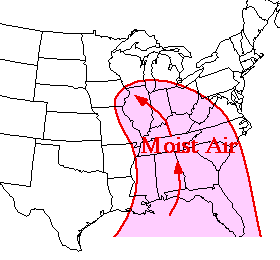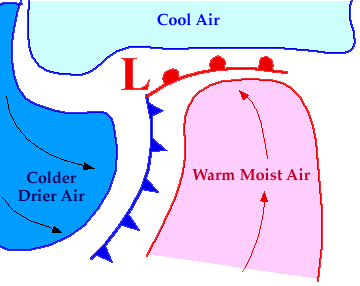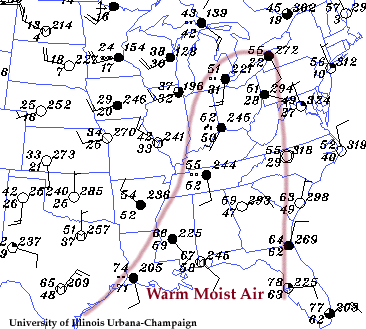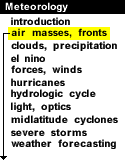
|
Maritime tropical air masses originate over the warm waters of the tropics and Gulf of Mexico, where heat and moisture are transferred to the overlying air from the waters below. The northward movement of tropical air masses transports warm moist air into the United States, increasing the potential for precipitation.

Tropical air masses are generally restricted to the southern states during much of the winter. However, southerly winds ahead of migrating cyclones occasionally transport a tropical air mass northward during the winter season.

Below is a map of surface observations and the leading edge of a tropical air mass surging northward into the Ohio Valley has been highlighted in red. Southerly winds behind the boundary signify the continued northward transport of warm moist air.

From these reports, we see that most stations in the tropical air mass generally exhibit relatively warmer temperatures, with higher dew point temperatures, and winds generally out of the south. Notice that on the other side of the red boundary, outside of this air mass, surface conditions are much different, which indicates the presence of an entirely different air mass.

continental polar |
|

Fronts |




